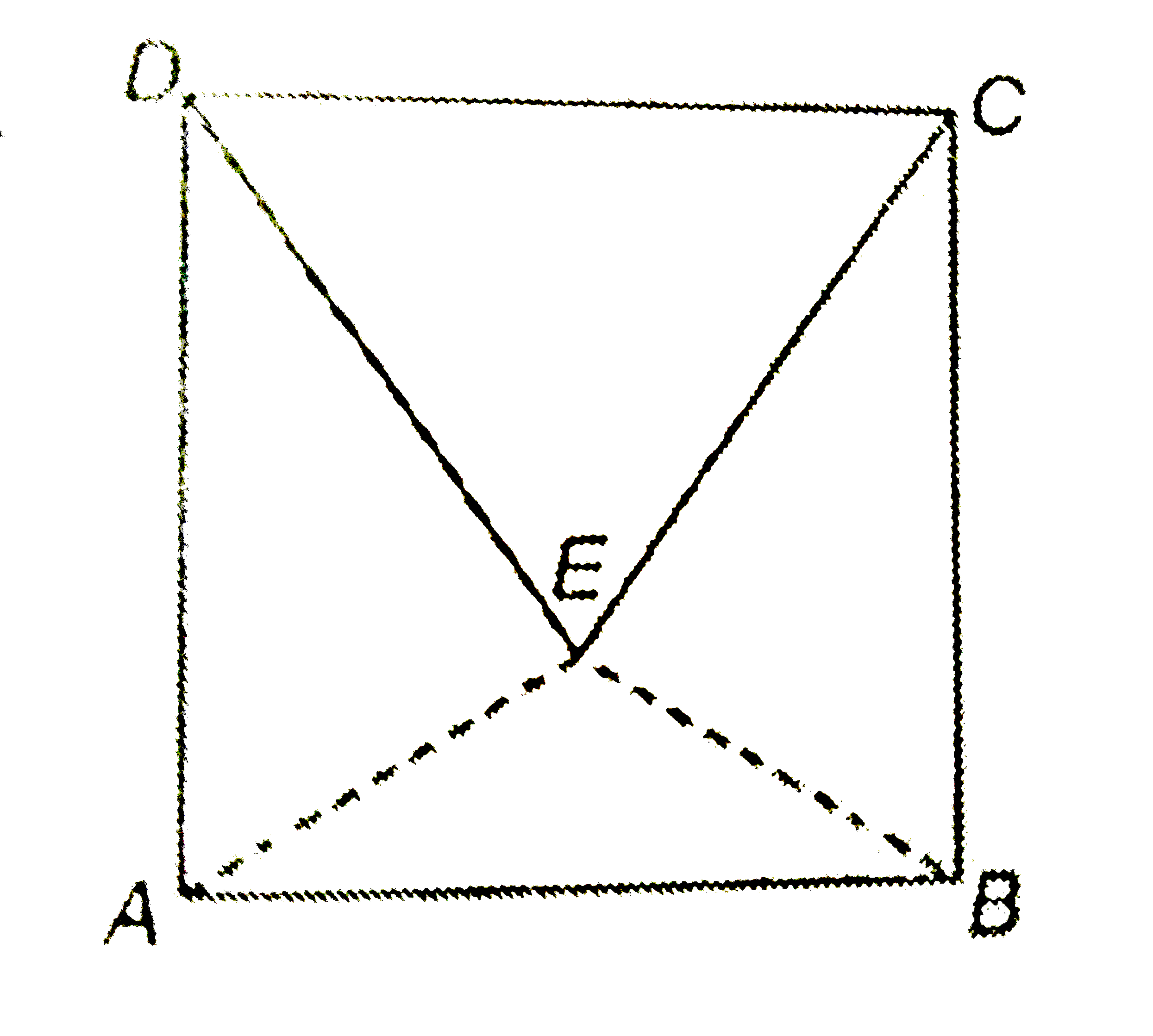The give figure shows a square ABCD and an equilayeral teiangle APB. Calculate :
(1)∠AOB(ii)∠BPC(iii)∠PCD(iv)reflex∠APC

The correct Answer is:(i)75∘ (ii)75∘ (ii)15∘ (iv)225∘
Step by step video & image solution for The give figure shows a square ABCD and an equilayeral teiangle APB. Calculate : {:((1)angleAOB,(ii)angleBPC),((iii)anglePCD,(iv)"reflex"angleAPC):} by Maths experts to help you in doubts & scoring excellent marks in Class 9 exams.
Updated on:21/07/2023Topper's Solved these Questions
- QUADRILATERALSBOOK - NAGEEN PRAKASHAN ENGLISHCHAPTER - QUADRILATERALSEXERCISE - Exercise 8b
15 Videos
- QUADRILATERALSBOOK - NAGEEN PRAKASHAN ENGLISHCHAPTER - QUADRILATERALSEXERCISE - Revision Exercise (very Short Answer Questions)
10 Videos
- QUADRILATERALSBOOK - NAGEEN PRAKASHAN ENGLISHCHAPTER - QUADRILATERALSEXERCISE - Problems From NCERT/exemplar
11 Videos
- PROBABILITYBOOK - NAGEEN PRAKASHAN ENGLISHCHAPTER - PROBABILITYEXERCISE - Revision Exercise (very Short Answer /short Answer Questions)
10 Videos
- STATISTICSBOOK - NAGEEN PRAKASHAN ENGLISHCHAPTER - STATISTICSEXERCISE - Revision Exercise
12 Videos
Similar Questions
The given figure shows a square ABCD and an equilateral triangle ABP.

Calculate :
(i) ∠AOB
(ii) ∠BPC
(iii) ∠PCD
(iv) reflex ∠APC
View SolutionThe given figure shows a square ABCD and an equilateral triangle ABP. Calculate:

reflex ∠APC
View SolutionThe given figure shows a square ABCD and an equilateral triangle ABP. Calculate:

∠PCD
View SolutionThe given figure shows a square ABCD and an equilateral triangle ABP. Calculate:

∠BPC
View SolutionThe given figure shows a square ABCD and an equilateral triangle ABP. Calculate:

∠AOB
View SolutionThe adjoining figure shows a square ABCD and an equilateral triangle DEC. Prove that :
(i) ∠ADE=∠BCE=30∘
(ii) ΔADE≅ΔBCE

View SolutionThe following figure shows a square ABCD and an equilateral triangle DCE. Prove that :
(i) ∠ADE=∠BCE=150∘
(ii) ΔADE≅ΔBCE
(iii) AE=BE

View SolutionIn the adjoining figure, ABCD is a square and PAB is an equilateral triangle. Find :
(i) ∠APD
(ii) ∠PDC
(iii) ∠DPC
(iv) Prove that DP=CP

View SolutionIn the given figure , BD is a side of a regular hexagon. DC is a side of a regular pentagon and AD is a diameter , Calculate:
(i) ∠ADC,
(ii) ∠BDA
(iii) ∠ABC
(iv)∠AEC

View SolutionThe following figure shows a trapezium ABCD in which AB is parallel to DC and AD = BC.

Prove that :
(i) ∠DAB=∠CBA
(ii) ∠ADC=∠BCD
(iii) AC = BD
(iv) OA = OB and OC = OD
View Solution
